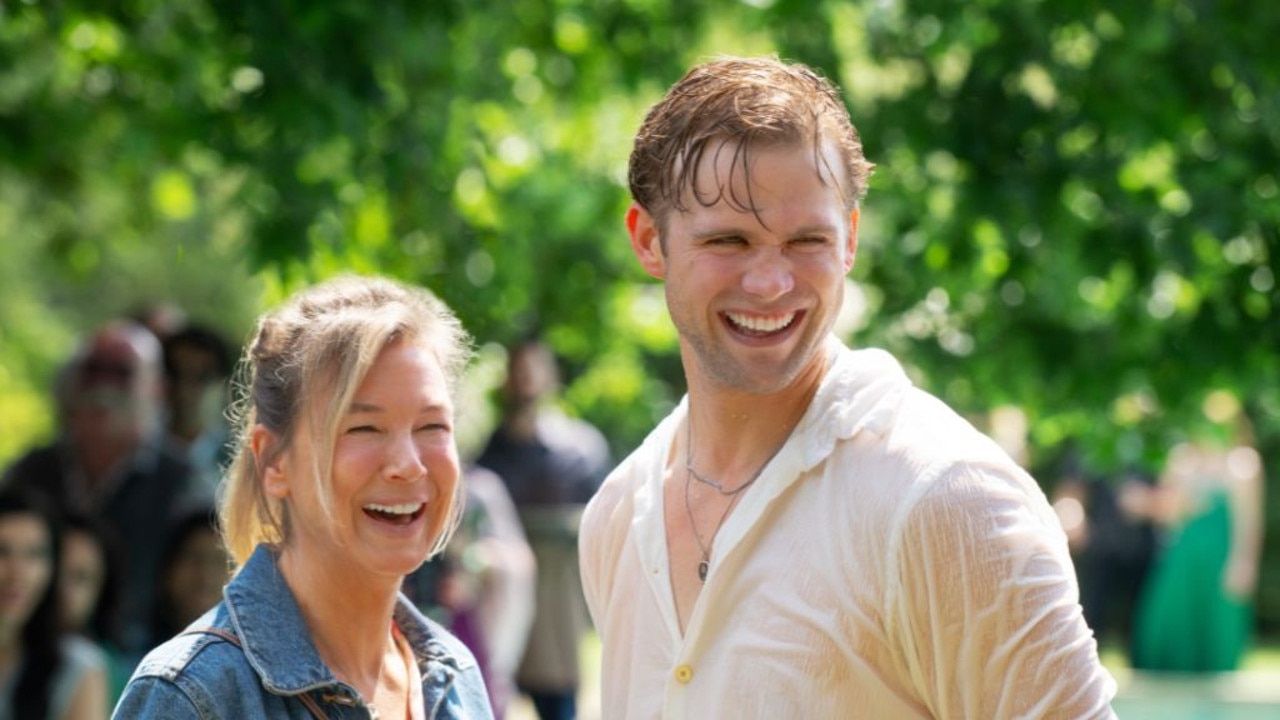Paradise lost as the National Gallery of Victoria reveals apocalypse, death and disaster
DEATH is the final reality of human life, and not just for the banal reason that we are all destined to die in the end.
DEATH is the final reality of human life, and not just for the banal reason that we are all destined to die in the end but, more importantly, because the finiteness and vulnerability of our existence in this world is what gives urgency, meaning and even nobility to human life.
Homer saw this, in The Iliad, with a burning clarity. Mortality is what lends poignancy to our experience, gravity to our moral choices. The gods, being immortal, live at ease, as he says. They have so little to lose that life for them is a comedy tinged with occasional melancholy when a mortal of whom they are fond, like Sarpedon, is doomed to perish.
In a sense, nothing is very real for the gods. But it's all frighteningly real for humans, who have only one life in this world of light and not much to look forward to in the grey existence after death.
The Homeric heroes love life and strength and beauty, but their duty, their noble rank, and the position in which fate has placed them leaves them no honourable choice but to face death with the courage befitting a warrior. Hector knows he will die but has no alternative. He must do his duty and defend his people as long as he can. It is the essence of the tragic vision of life: human dignity is resolution in the face of absurdity and it is, strangely enough, a dignity not available to the gods.
The experience of death in the medieval and early modern period was very different and would have been incomprehensible to Achilles or Hector, or indeed to the later classical Greeks. In the first place, Christianity depreciated the value of our earthly life, emphasising instead the eternity of bliss awaiting the meek, in compensation for humiliations and suffering endured in this world, and a parallel eternity of dreadful torments for the wicked.
The imperative of nobility was eclipsed by a calculus of sin: even in Plato and Aristotle, the primary ethical question that a Greek asked was how to become good. Christian philosophy, based on Greek models, theoretically accepted that good was a positive value and evil merely a lack, but in practice the life of Christians became a constant anxiety about the sins they had committed and the accumulation of guilt and eventual punishment they would incur - all ideas essentially foreign to the classical attitude, and rightly criticised by Nietzsche as morbid.
Christian anxieties about death are the subject of a fascinating exhibition at the National Gallery of Victoria, drawn from the gallery's collections, and principally from the works on paper collection, for mortality and the afterlife were important matters for the new arts of printing and printmaking that arose about the middle of the 15th century and transformed the dissemination of knowledge and the proliferation of imagery in the late 15th and early 16th centuries.
Ancient texts were published in their original languages - there were famous polyglot printing firms in Venice, Antwerp and elsewhere - translated and accompanied by extensive commentaries, making literature, philosophy and science increasingly accessible to independent readers, instead of being largely restricted to the milieu of the university and transmitted through a master-pupil tradition. The Bible, even more importantly, was printed in its original languages, in Latin translation and even in vernacular versions, contributing to the swell of religious debate that led to the Reformation.
The break-up of the church was the greatest catastrophe of the 16th century. In the long run, the shattering of Christendom into opposed and warring factions has without doubt helped to undermine religious belief altogether, but in the short term and, indeed, for centuries to come, it provoked outbreaks of the kind of violent sectarianism that we see today tearing apart the Islamic world. Christians, once united by a common faith, were now divided into Catholic and Protestant, and then sects of Protestantism, and ever more bizarre cult groups continued to appear as late as the 19th and even 20th centuries.
Wars began to break out about the middle of the 16th century, ravaging France in the ensuing decades and culminating in the horrors of the Thirty Years War (1618-48). At the same time, the technology and practice of war were changing rapidly: cannons, already in use in the 15th century, were improved and became more mobile, so that they could be employed as field artillery and not just as siege engines. Medieval knights, with their aristocratic values and ethical code of chivalry, were being replaced by mercenaries who were inevitably low-born thugs and, in the context of the Reformation, could be religious zealots as well.
The contrast is made, without comment, in Albrecht Durer's engraving of a knight and a lansquenet (from the German landsknecht). The reality of this new kind of endemic sectarian civil war is vividly illustrated in the great series of the Miseries and Misfortunes of War by Jacques Callot (1633). We see the army attacking villagers, looting, raping and killing for sport. But we are also shown the beginnings of military discipline and judicial punishment for these crimes. In one image, scores of mercenaries are hanged from a great tree. In another, a criminal lies on the wheel, a priest holding a crucifix above his head and exhorting him to repent as the executioner smashes his bones with an iron bar.
It was a hard enough world, with the inevitable sufferings of human life, the dangers of childbirth and infancy, the threat of epidemics, of droughts and other natural disasters - and all this made worse, as we know too well today, by the gratuitous folly of religious bigotry. But in the religious hysteria of the time, even such earthly sufferings were dwarfed by the terror of damnation, and this fear was exacerbated by the fact each side believed their opponents to be heretics doomed to eternal fire. What if you were on the wrong side? What if they are right and you are the one going to hell? Such nagging doubts can only be suppressed in the mind of the fanatic by self-righteous rage.
The centrepiece of the exhibition, indeed, is the extraordinary series of woodcuts by Durer in the collection of the NGV, illustrating each of the episodes of the Apocalypse. They are displayed individually around the walls of the gallery, but a set bound in its original book form is even more impressive because images that are modest in size on a wall seem relatively much bigger, almost overwhelming in the volume, especially as they are designed to fill the whole page.
Among these famous images, the best-known of all illustrates the four horsemen of the Apocalypse. Durer's emblem of destruction draws on the longstanding medieval iconography of death, in which the emphasis is often on the unexpected and cruel interruption of the joy of life, and frequently too on the ultimate equality of all humans in the face of mortality: popes, kings and princesses die as surely as peasants and soldiers.
Sometimes the dead, or those doomed to die, are shown gruesomely dancing with the personification of death, as though to suggest that the process is under way within us in the midst of our pleasures.
Witchcraft is another theme of the exhibition, related because it was only in the climate of heightened anxiety created by the breakdown of Christendom and the failure of universal belief that the paranoia about witches could arise. Witch-hunting is contemporary with the age of religious wars and lives on into the 17th century, an obscurantist throwback in the age of the scientific revolution. Witches became a motif in popular art addressed to the superstitious masses, but also appealed to artists, from Salvator Rosa to Goya, who found in them a more general and symbolic motif evoking evil and the irrational.
The most benign images of death, the furthest removed from any kind of irrational fear or panic about damnation or black magic, are in the form of the memento mori, usually combinations of still-life objects meant to induce a philosophical meditation on the inevitability of mortality; Michel de Montaigne wrote a famous essay at the end of the 16th century on the proposition que philosopher, c'est apprendre a mourir - that philosophy is learning to die - whose very formulation shows that he is thinking in humanist rather than religious terms.
The skull is naturally a recurrent motif in these still-life pictures. Time and again it is the companion of the scholar and the philosopher, most often in the person of St Jerome, who is represented here in a little painting by Joos van Cleve as well as in Durer's great engraving of the scholar deep in the recesses of his study. Death, in its most positive role, is a reminder to work and to achieve something that may outlast our own short spans.
Perhaps the most unexpected theme among the many representations of death in the exhibition is that the end of life may be a welcome relief to the poor. Thus there is an engraving of an old woman by Wenceslaus Hollar after Holbein (c.1651) with the blunt motto melior est mors quam vita - death is better than life. Even more remarkable is another little image of death trying to detain a heavily laden pedlar, accompanied by Christ's words at Matthew 11:28: "come to me all you who are weary and burdened".
It seems a little uncomfortable, to say the least, to identify Christ implicitly with death, and one has to ask to whom this message is being addressed. Small prints were not expensive, but neither were they presumably going to be purchased by a man as poor as this. Is the apparent consolation meant instead for the wealthier classes contemplating the intractable problem of poverty?
As for the pedlar's view of the matter, it was probably similar to that of the old and penurious woodcutter of La Fontaine's Fables (I.16). Exhausted by a life of labour, he calls on death, who promptly turns up asking how he can be of assistance. Just help me get this load back on my shoulder, the woodcutter replies: suffering is better than death.
The Four Horsemen: Apocalypse, Death and Disaster, National Gallery of Victoria, Melbourne, until January 28.



